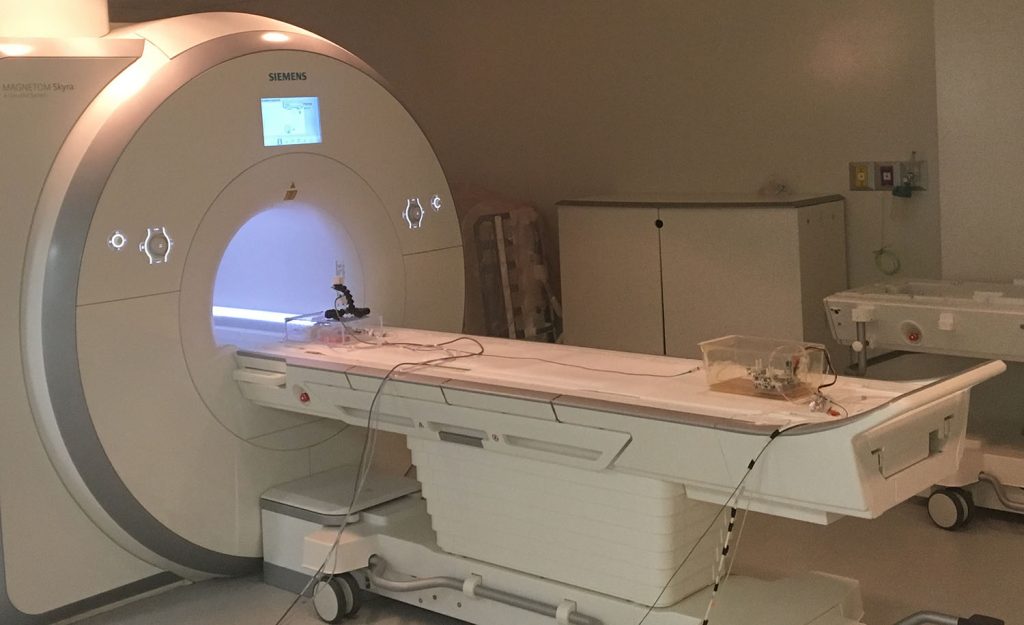Hepatocellular cancer is the second cause of cancer-related deaths in the world and its incidence is increasing. In the advanced stages of the sickness, transarterial chemoembolization has become the preferred treatment to extend life expectancy.
We propose a novel, minimally-invasive treatment that aims to inject biodegradable, drug-carrying, ferromagnetic microbeads in hepatic arteries and navigate them to the tumor using the magnetic field gradients of a clinical MRI machine. This concept, called Magnetic Resonance Navigation (MRN) has shown promising results in vitro as well as in vivo, but many challenges remain to be overcome before it can be transferred into clinical practice, including the feasibility in physiologically realistic settings and synchronization to an arterial rheology measurement and modelling system.
Ultimately, the imaging phase will allow to gather key rheological and geometrical parameters such as arterial morphology and hepatic blood flow. From this information, the propulsion sequence can be optimized to ensure proper microbead delivery. We will finally design a platform that integrates 3D artery modeling, real-time rheological parameter monitoring and automated microbeads injection.
 |
|---|
Setup for the in vitro selective navigation experiment, including the arterial phantom (head position) and the microbead injection actuator (feet position). |
Members of the team
Ning Li (Polytechnique, Nanorobotics Laboratory)
François Michaud
Rosalie Plantefève
Charles Tremblay (Polytechnique, Nanorobotics Laboratory)
Gilles Soulez
Samuel Kadoury (Polytechnique, Medical Imaging and Computational Analysis Laboratory)
Sylvain Martel (Polytechnique, Nanorobotics Laboratory)
Urs Häfeli (University of British-Columbia, Hafeli Lab)
